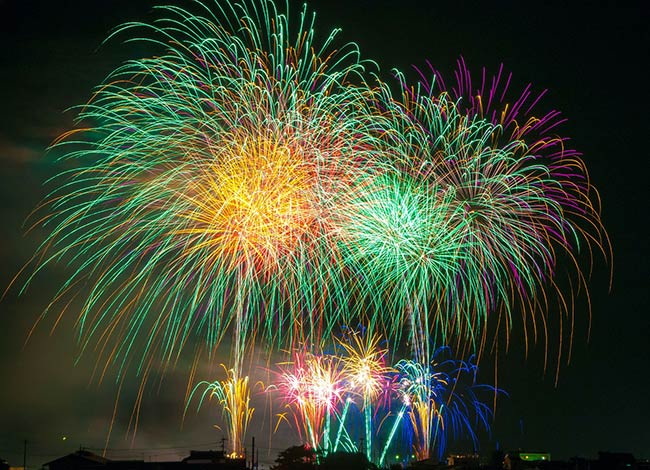Everyone enjoys a nice show of fireworks with their sparkling colors and shimmering lights. In just a short week, Independence Day will be here, and so will the explosions of these interesting chemical reactions. Interestingly, the Chinese are credited with creating fireworks many centuries ago somewhere between 960 and 1279 A.D. At special events and celebrations, citizens of China would shoot off fireworks for pleasure, and sometimes to ward off evil spirits. It was not until July 4th, 1776 that the United States used these celebratory contraptions, even though they had already been used in England for quite a while. Now, let’s jump into how fireworks are formed and how they make their intricate designs in the sky.
 First of all, in order to build an enjoyable display, one must have a strong knowledge of both chemistry and physics, as many elements are used to create chemical reactions.
First of all, in order to build an enjoyable display, one must have a strong knowledge of both chemistry and physics, as many elements are used to create chemical reactions.- In order to create certain colors, different physical elements are used. Magnesium creates a bright white light, while strontium and lithium each showcase a different shade of red. The most dangerous colors to form, blues and greens, are formed from barium and copper.
- Other elements also produce varying effects for each firework. Calcium deepens colors, while titanium tends to produce silver sparks. Phosphorus creates a glow in the dark effect, and zinc employs a smoking effect.
- Now, here is what goes into each firework:Black powder, as a propellant
- Mortar, that creates the outer cylinder container
- A shell, made from paper and string, which is cut in half and filled with stars
- Stars, the chemical compounds that actually react and explode
- A bursting charge, a substance in the middle of the stars, which causes them to ignite
- A fuse, which allows for a time-delayed explosion
- In order to make combinations of effects without causing the other chemicals to mix, shells are split into many separate sections. The first one ignites, which then causes the second to ignite, and so on. As a result, various effects can be seen at the same time.
- Fireworks produce a pattern that corresponds with the way that their stars were packed into the shell. If the stars were placed in a heart shape, a flag shape, or a smiley-face shape, that is the way they would appear in the night sky.
Now that you know the basics of fireworks, you can appreciate the hard work that went into creating each one!
To read more about fireworks, visit:

